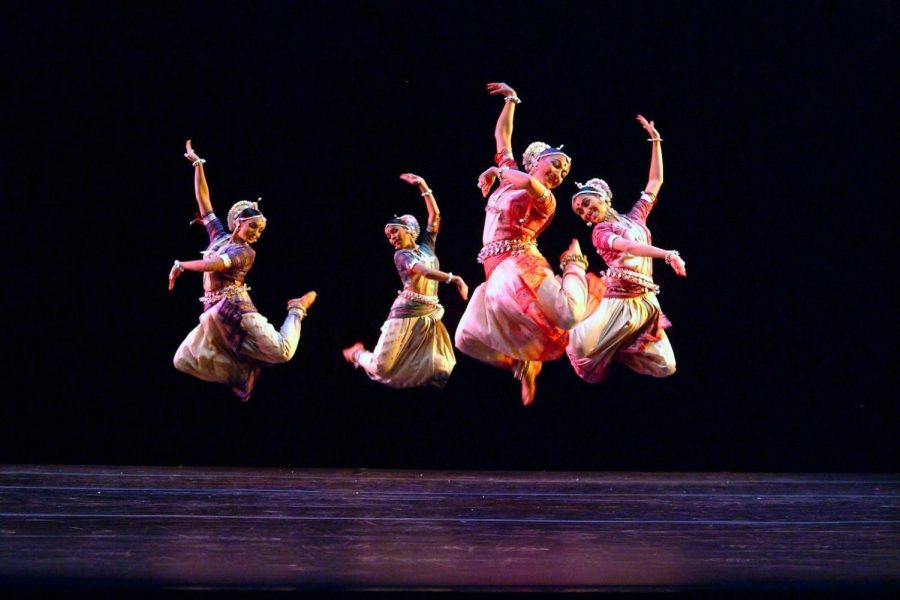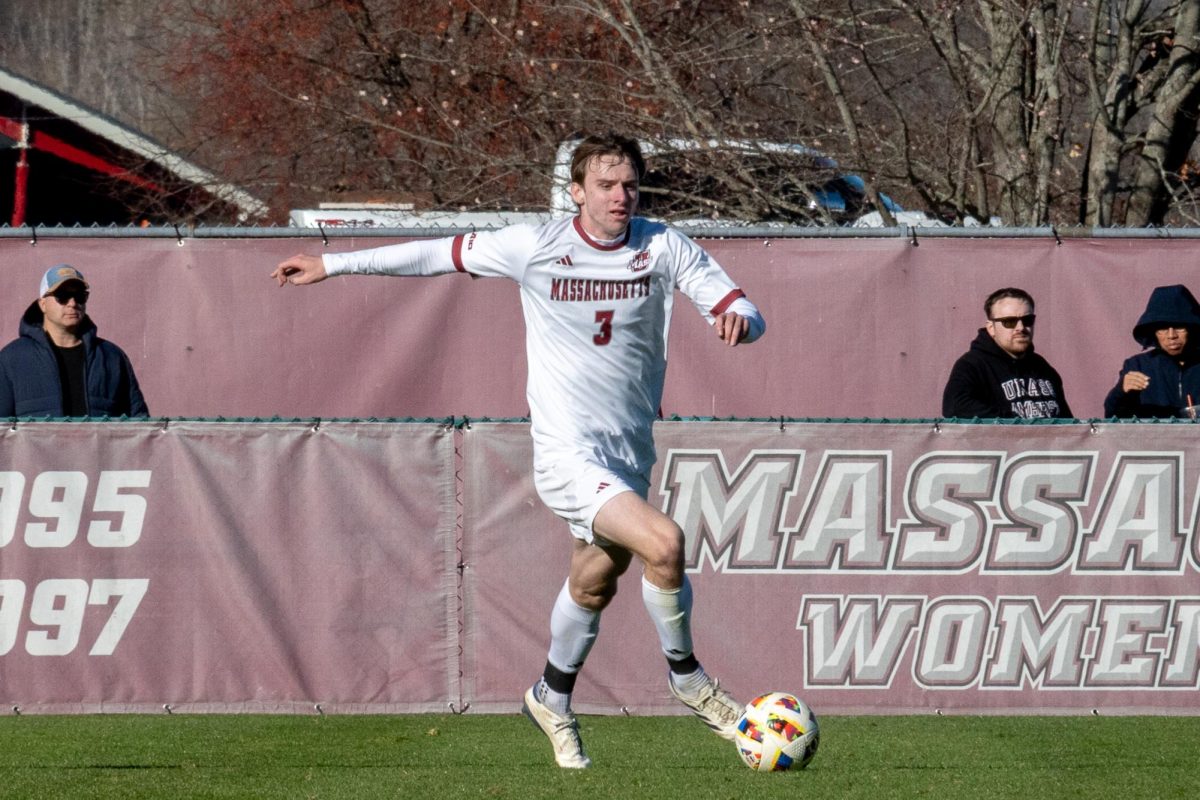“Collection; compilation; drawing together:” this is the definition of the Sanskrit word Samhara. It also describes two dance companies’ harmonious labor.
On October 13, the Nrityagram Dance Ensemble and Chitrasena Dance Company brought Samhara to the Fine Arts Center stage. Headed by artistic director and performer Surupa Sen, this collaboration melds together the best of two South Asian dance styles: Odissi, classical Indian dance and Kandyan, Sri Lankan classical dance. Four Odissi dancers and two Kandyan dancers as well as a live musical and vocal ensemble of five make up the cast. Audiences soon find that despite the distinction between these two styles, they are united by their colorfulness and narrative deftness and create a novel experience.
Samhara aims to unite two ancient dance traditions. Odissi comes from Eastern India and originated as a sacred ritual dedicated to the gods. One of its distinguishing traits is the Z-shaped line of the dancers, formed by a bend in the neck, waist and knees. The tales told through Odissi include stories of “love and union,” “human and divine” and “magic and spirituality.” The Nrityagram Dance Ensemble is unique in that their school and company reside in a dance village in Bangalore, India, where they live, eat and breathe dance, with Odissi being only one of seven styles taught.
Kandyan hails from the island of Sri Lanka, with beginnings in exorcism rituals performed by Indian shamans. In contrast to Odissi dancers’ lines, the Kandyan form is rooted in a square-like position in the form of turned-out bent knees, like a squat. Adapted by dancers and gurus Chitrasena and Vajira, Kandyan was revived in the post-colonial period and is now performed worldwide by the Chitrasena Dance Company.
“Arpanam,” a “prayer to invoke the benevolence of Goddess Parvati,” opens the performance. Three Odissi dancers in plum, saffron and rose-colored robes three-step onto the stage from the wings—ta-ta-ta, ta-ta-ta, ta-ta-ta—feet thumping to the beat of the drum, bell anklets ringing. Two Kandyan dancers leap into the ensemble, waist-length braids and hairpieces swinging as they dance. It becomes clear in no time that the vocabulary of the dancers’ bodies is vast; they move in a formation in line and travel around each other, incorporating lithe little jumps, balances on one foot, and stomps of flexed feet. Dancers plants their heels into the stage floor as their hands wind through the air, pausing in arcs around their torso. Arpanam’s brisk tempo and multi-layered sounds make it a vibrant opening for the night.
The second act, “Shiva Ashtakam” (“Ode to Shiva”), continues to showcase how richly the performers utilize their bodies. Their kohl-rimmed eyes and red-stained lips are just as integral to the dancing as their arms, hands, and feet. When the narrator’s omniscient voice describes Shiva as Bhairava, one of Shiva’s many forms, as having “matted locks and blood-stained eyes / at once terrifying and astounding,” the dancer’s own eyes widen fiercely as her hands tremble and radiate from her head. This piece begins and ends as a solo, with two Odissi dancers joining in between. As a trio, the interplay with each other’s spaces shape an inspiring geometry: one dancer crouches and leans her head into the negative space created by the other’s bent waist; they reach their hands, fingers intricately curled, towards the stage left and smile as if they are privy to a secret the audience doesn’t not know.
“Krishna’s Lament,” a solo performed to a Sanskrit poem from the 12th century, opens the show again after a brief intermission. Like the previous act, the artistic use of facial expressions, bhava, and gestures, mudra, is used to portray Krishna’s betrayal to his love, Radha, and his ensuing repentance. In a show of shame, dancer Surupa Sen pounds her fist into her palm, face contorted in anguish. As the vocalists wail, Krishna’s pleas—“forgive me beloved! / I will never hurt you again / allow me a glimpse / of your beauty / and dispel / my pain and suffering”—and Sen prostrates herself on the stage, one leg extended behind her, hands stretched beyond her head as if in prayer. The pace, however, lulls slightly; though it is unlike the upbeat opening of the night, Krishna’s lament is a powerful example of the deliberateness of each movement. From a subtle tremble of a hand to a yogic three-point balance, the dancer manipulates each inch of her body in physical storytelling.
“Alap,” the final act, is a rousing celebration of both Odissi and Kandyan dance. The Kandyan drum returns, with its heavy, heart-like beats, alternating with the staccato Odissi chants. Dancers whirl, twirl and even throw in some contortion, one dancer arching her back while kneeling, face upturned for the audience to see. Their movements are highly dynamic; languorous, sustained stretches of the arms become urgent, choppy strikes in an instant. In one moment, the performers pose in place; in the next, they weave across the stage breathlessly fleet-footed. This is all done with impressive co-ordination; their synchronicity is not overstated but is undeniably present. Harmony rings through their every moment.
Samhara is not just a dance performance; it is a glowing show of what can be achieved when mind, body and spirit are united in movement. Through every day immersion and through the mission of revitalization, the members of the Nrityagram Dance Ensemble and Chitrasena Dance Company inhabit the very soul of their art. The parting gift of these performers: a full and vivid liveliness that will not soon be forgotten.
The Nrityagram Dance Ensemble and Chitrasena Dance Company will continue their American tour in Lewisburg, Pennsylvania and New York City, New York.
Sam Wong can be reached at [email protected].



















